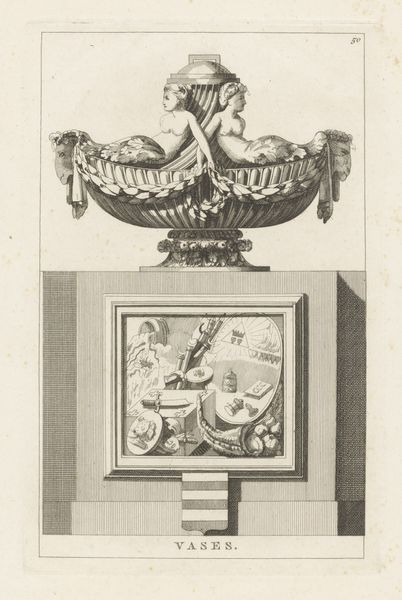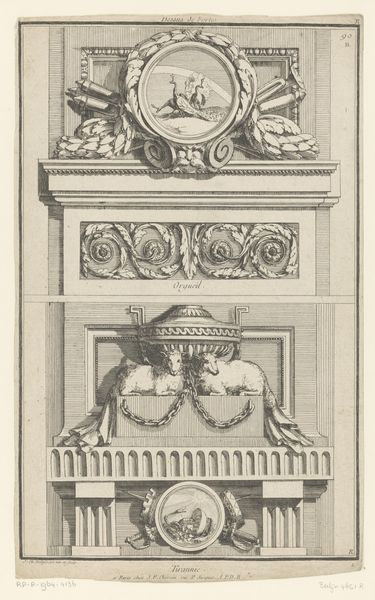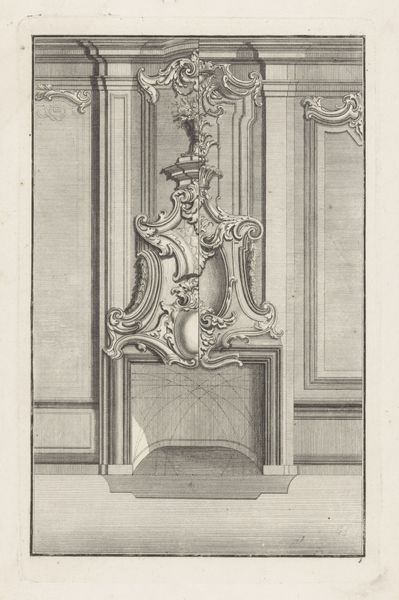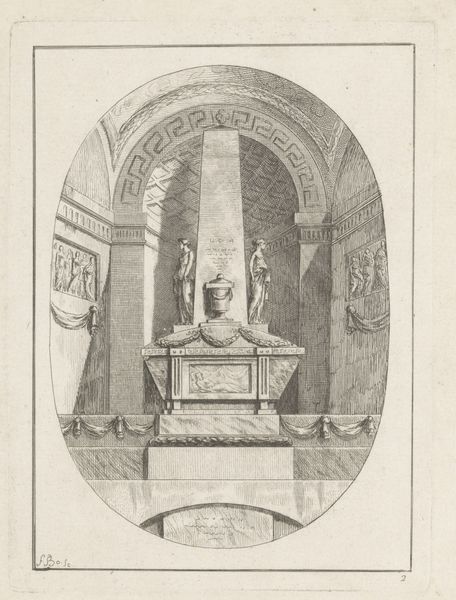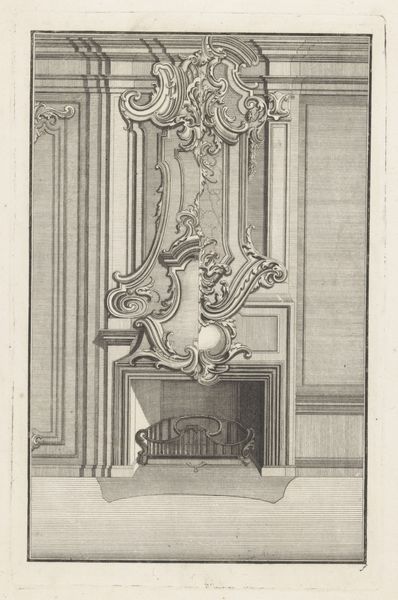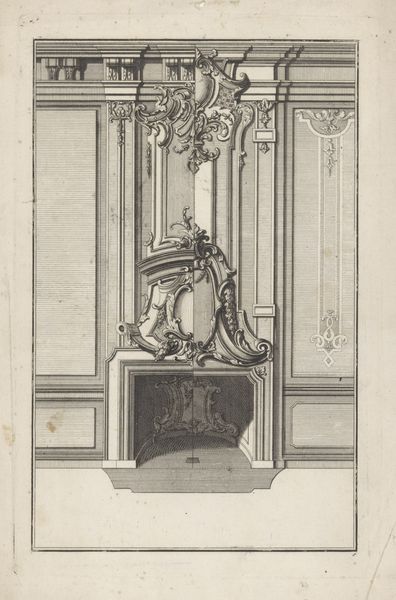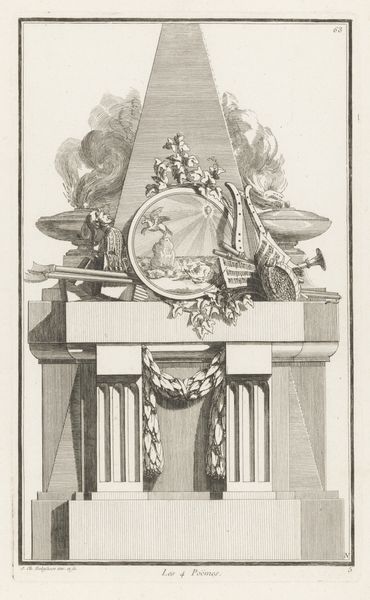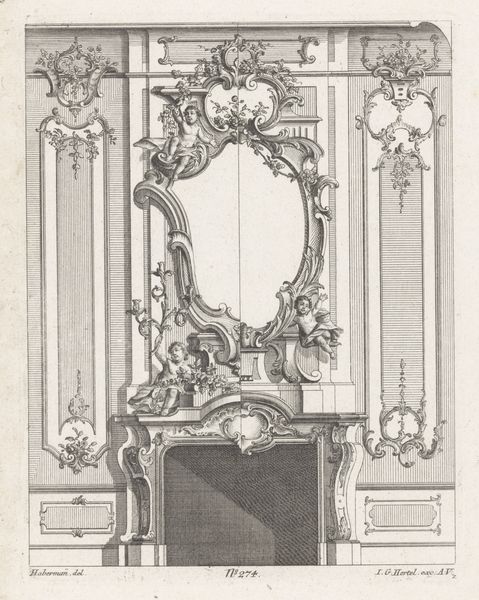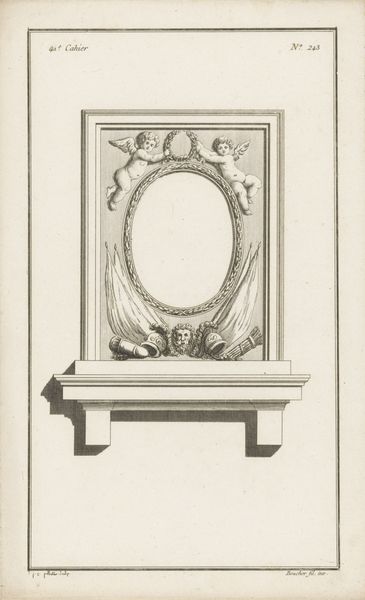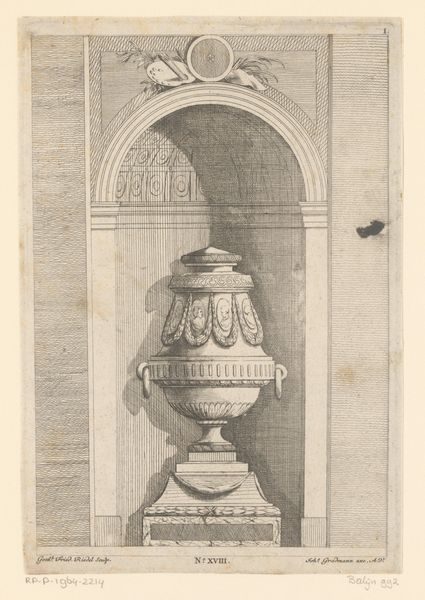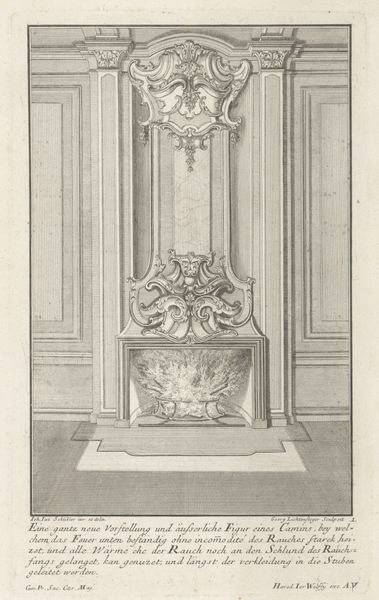
print, engraving
#
neoclacissism
# print
#
decorative-art
#
engraving
Dimensions: height 251 mm, width 164 mm
Copyright: Rijks Museum: Open Domain
Curator: What a stark image, all restrained lines and pale hues. It almost feels like a monument rendered in moonlight. Editor: We're looking at "Vase with garlands and medallion," a print created after 1771. It belongs to the Rijksmuseum collection. It's an engraving that strongly reflects the neoclassical style which, remember, looked back to ancient Greece and Rome for its aesthetic and philosophical inspiration. The artist, unfortunately, is anonymous. Curator: Anonymous, yet this print screams symbolic weight. Let's start with the vase itself – the focal point. Vases in art often allude to mortality and remembrance, don’t they? A vessel containing, a life lived. And here, crowned with garlands and a medallion...it feels ceremonial. Editor: Absolutely. And if you look closely at the lower section, the rectangular frame beneath the vase contains a symbolic tableau that seems intensely tied to governance, tradition and, possibly, dynastic succession, given the regalia and religious symbolism represented. Curator: Note too the Maltese cross propped casually beside it, practically an afterthought in this carefully constructed display, yet loaded with its own complex history, linking to military and religious orders. How do you read its placement? Editor: I see it as a quiet disruption. Neoclassicism thrived on order and idealized forms. But the slightly askew angle of the cross and the medley of somewhat obscure objects challenges that notion of a pristine, perfect past. It makes me wonder about the tensions inherent in adopting historical ideals in the messy reality of late 18th-century Europe. Curator: A clever point, especially considering that the symbols appear very different. The details point to conflicting power dynamics at play, even while the artwork ostensibly promotes an aesthetic of calm and order. Editor: For me, the arrangement, with its meticulous lines, carries an aura of calculated precision, almost chilling. It prompts me to consider what aspects of humanity, particularly of lived experiences, are excluded when civilizations venerate an often mythical past so emphatically. Curator: So the engraving, while beautiful, is ultimately more about the present than antiquity, reflecting power, control, and perhaps, anxieties about the future cloaked in the language of the past. Editor: Precisely, that interplay of tradition and contemporary circumstance fascinates me most. By examining the context, the identities at play, and the choices made, we can start to unravel the ideology imbued within the artwork.
Comments
No comments
Be the first to comment and join the conversation on the ultimate creative platform.

